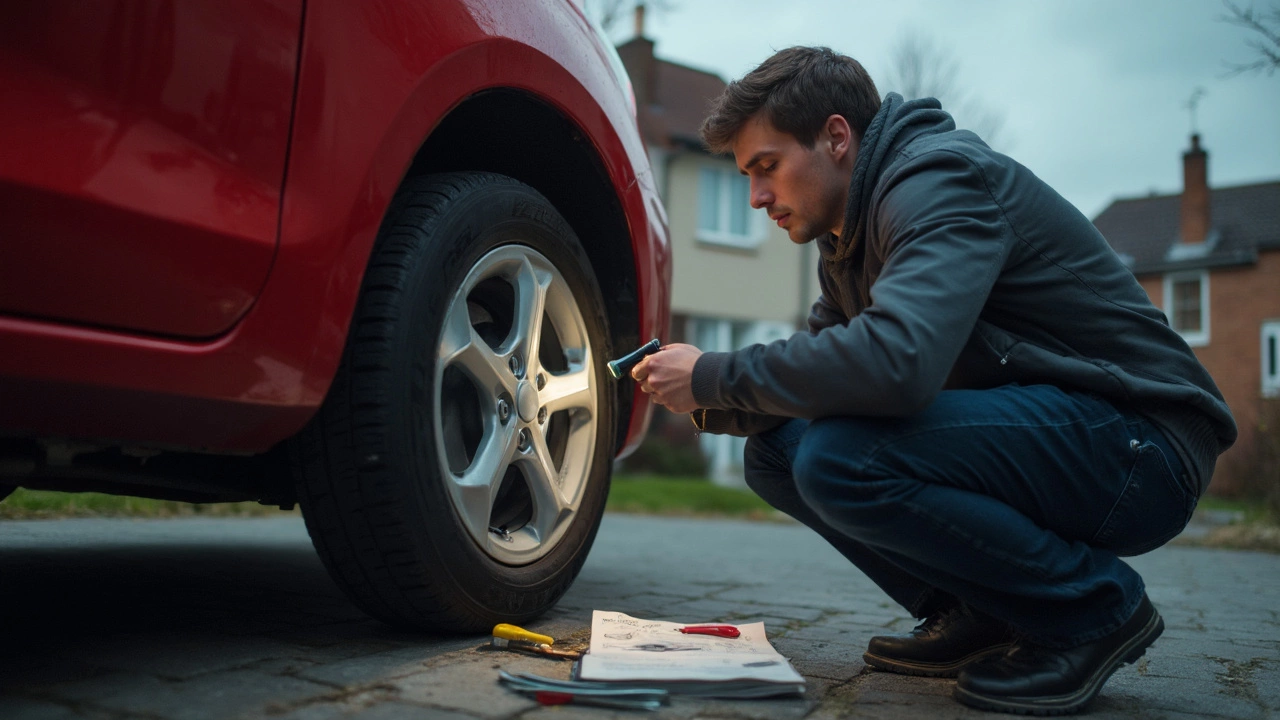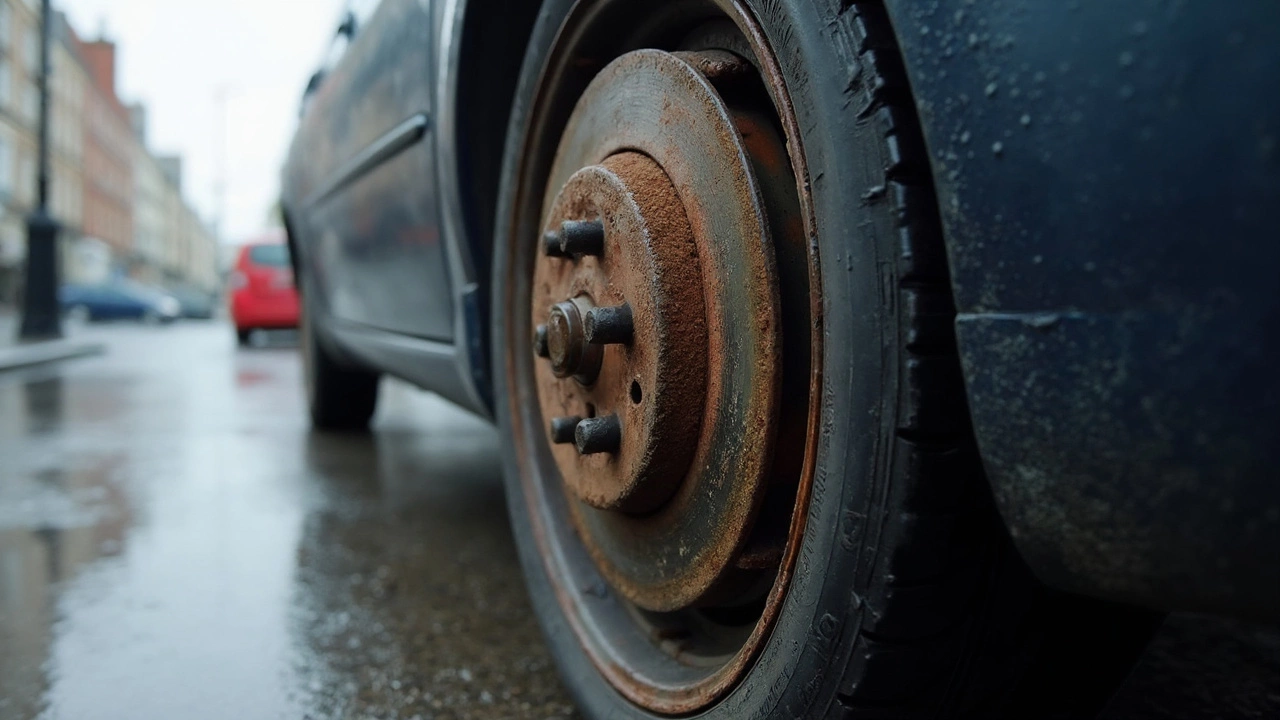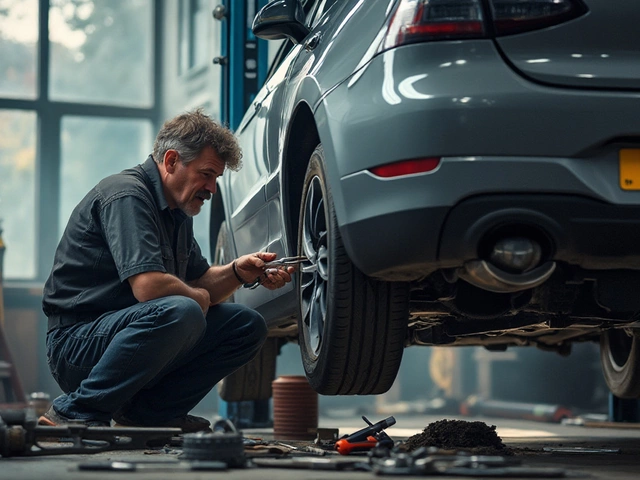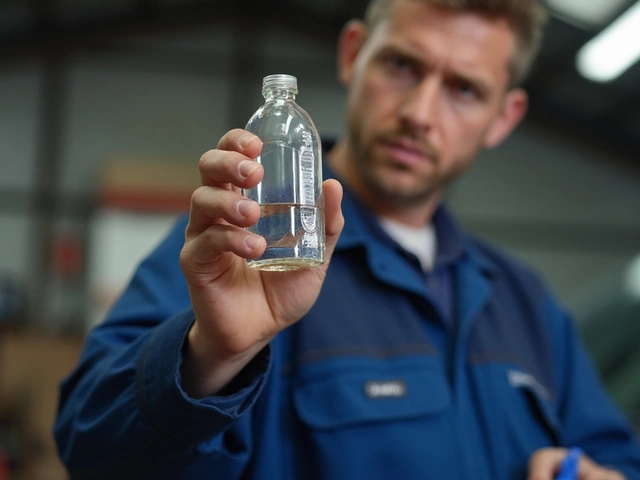Car Brakes: How to Keep Them Safe and Efficient
Your brakes are the only thing that can stop your car in an emergency, so keeping them in top shape is a must. Most drivers only think about brakes when a squeal or a wobble shows up. The truth is, a few quick checks can catch problems early and save you money.
Common Signs Your Brakes Need Attention
Listen for any high‑pitched squeal when you press the pedal. That sound usually means the wear indicator on the pads is touching the rotor – the pads are ready for a swap. If you feel a grinding noise, the pads are likely gone and the metal is scraping the rotor, which can damage the disc and cost more to fix.
Vibrations or a pulsating pedal feel are another red flag. It often points to warped rotors or uneven pad wear. When you notice the car pulling to one side while braking, check for stuck calipers or different pad thickness on each side.
Any change in brake pedal height is worth noting. A soft or spongy pedal can mean low brake fluid, air in the lines, or a leak in the system. Keep an eye on the brake fluid reservoir; the fluid should stay within the "min" and "max" lines.
Rear‑only brake pad replacement can be tempting if the front pads look fine. While it’s technically possible, most experts recommend changing both front and rear at the same time. Matching pad material and wear helps keep the braking balance even, preventing uneven pull.
DIY Checks and When to Call a Professional
Start with a visual inspection. Pop the wheel well, look at the pad thickness – most new pads are around 10‑12 mm. If you see less than 3 mm, it’s time for a replacement. Check the rotors for scoring or deep grooves; a smooth surface should feel uniform when you run your fingertip over it.
Next, test the brake fluid level. Your car’s owner manual will tell you the recommended type. If the fluid is dirty or low, top it up with the correct fluid and bleed the system if you’re comfortable with the process. Otherwise, let a professional handle it to avoid introducing air.
When you’re not sure about a noise or feel, it’s wise to get a mechanic’s opinion. Brake issues can affect stopping distance dramatically, and a slight mistake could lead to a serious accident. A local shop like Northwich Tyres Centre can inspect pads, rotors, calipers, and fluid in one go, often spotting hidden problems that DIY checks miss.
Finally, remember that brake parts have a lifespan, but driving style matters. Heavy city traffic, frequent stop‑and‑go, and hard braking wear pads faster. If you drive aggressively, schedule a brake check every 10,000 miles instead of the standard 20,000‑30,000 mile interval.
Keeping an eye on these signs, doing simple visual checks, and knowing when to hand the job over to a pro will keep your car braking safely and your wallet happier.
 8 June 2025
8 June 2025
Brake Pads: How to Tell If They're Bad
Knowing when brake pads are bad can save you from scary moments on the road and expensive repairs. This article breaks down the warning signs that your brake pads need attention. You'll find out what noises, vibrations, and changes in brake feel really mean. We'll talk about why ignoring worn pads is risky and how to check them yourself. The tips here can help keep your ride safe and smooth.
 27 May 2025
27 May 2025
How to Tell If Rotors Are Bad: Easy Signs Your Brakes Need Help
Rotors are easy to ignore, but worn or damaged ones can make your car unsafe and cost you more in repairs. This article breaks down the most common signs your rotors are bad, what those symptoms actually mean, and how to check them yourself. You’ll get clear tips so you know when it’s time for new rotors or just a simple fix. Learn why paying attention to rotor health saves money—and maybe even an accident. Don’t wait until your brakes fail in traffic.






0